
Dame Silvia Rose Cartwright is a New Zealand jurist who served as the 18th Governor-General of New Zealand, from 2001 to 2006. She was the second woman to hold the office, after Dame Catherine Tizard.
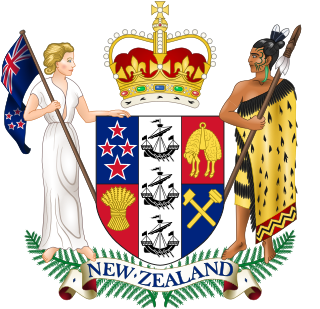
The Supreme Court of New Zealand is the highest court and the court of last resort of New Zealand. It formally came into being on 1 January 2004 and sat for the first time on 1 July 2004. It replaced the right of appeal to the Judicial Committee of the Privy Council, based in London. It was created with the passing of the Supreme Court Act 2003, on 15 October 2003. At the time, the creation of the Supreme Court and the abolition of appeals to the Privy Council were controversial constitutional changes in New Zealand. The Supreme Court Act 2003 was repealed on 1 March 2017 and superseded by the Senior Courts Act 2016.

Dame Sian Seerpoohi Elias was the 12th chief justice of New Zealand, and was therefore the most senior member of the country's judiciary. She was the presiding judge of the Supreme Court of New Zealand and on several occasions acted as administrator of the Government.
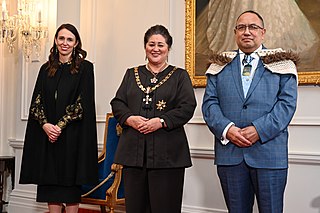
The Order of precedence in New Zealand is a guide to the relative seniority of constitutional office holders and certain others, to be followed, as appropriate at State and official functions. The previous order of precedence was revoked and Queen Elizabeth II approved the following Order of Precedence in New Zealand effective 20 September 2018:
- The Monarch of New Zealand.
- The Governor-General or, while acting in the place of the Governor-General, the officer administering the Government
- The Prime Minister
- The Speaker of the House of Representatives
- The Chief Justice
- The Dean of the Diplomatic Corps
- The Deputy Prime Minister
- Ministers of the Crown
- Former Governors-General
- Ambassadors and High Commissioners in New Zealand and Chargés d’Affaires accredited to New Zealand.
- The Leader of the Opposition in the House of Representatives
- Leaders, including co-leaders and joint leaders, of political parties represented in the House of Representatives, other than Ministers of the Crown.
- Members of the House of Representatives. There is no established order of precedence over members of parliament in general, although each party has its internal ranking.
- Judges of the Supreme Court of New Zealand, the Court of Appeal and the High Court of New Zealand.
- Former Prime Ministers, former Speakers of the House of Representatives, former Chief Justices, and members of the Privy Council.
- Mayors of territorial authorities and chairpersons of regional councils, while in their own cities, districts and regions. In 1989, boroughs and counties were amalgamated into district councils. District mayors, and the Chatham Islands mayor could expect to be accorded this same precedence.
- The Public Service Commissioner, Chief of Defence Force, Commissioner of Police, and Officers of Parliament .
- The Solicitor-General, Clerk of the House of Representatives, and Clerk of the Executive Council when attending a function involving the exercise of the position’s specific responsibilities.
- Chief executives of public service and non-public service departments.
- The Vice Chief of Defence Force, and Chiefs of Navy, Army and Air Force, and other statutory office holders.
- Consuls-General and Consuls of countries without diplomatic representation in New Zealand.
- Members of New Zealand and British orders, and holders of decorations and medals in accordance with the Order of Wear in New Zealand.

The Court of Appeal of New Zealand is the principal intermediate appellate court of New Zealand. It is also the final appellate court for a number of matters. In practice, most appeals are resolved at this intermediate appellate level, rather than in the Supreme Court. The Court of Appeal has existed as a separate court since 1862 but, until 1957, it was composed of judges of the High Court sitting periodically in panels. In 1957 the Court of Appeal was reconstituted as a permanent court separate from the High Court. It is located in Wellington.

The High Court of New Zealand is the superior court of New Zealand. It has general jurisdiction and responsibility, under the Senior Courts Act 2016, as well as the High Court Rules 2016, for the administration of justice throughout New Zealand. There are 18 High Court locations throughout New Zealand, plus one stand-alone registry.
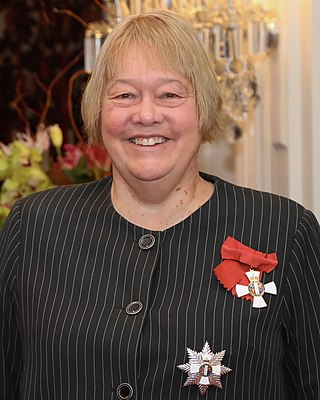
Dame Susan Gwynfa Mary Glazebrook is a judge of the Supreme Court of New Zealand.
Sir William David Baragwanath is a New Zealand lawyer and jurist. He served as president of the United Nations Special Tribunal for Lebanon between 2011 and 2015.

Sir Robert Grant Hammond was a New Zealand jurist and law professor. He was a judge of the New Zealand Court of Appeal during which time he was also president of the New Zealand Law Commission and chair of the Legislation Advisory Committee to Parliament. He published a wide range of books and legal texts and was one of the top law reform experts in the Commonwealth.

Sir William Gillow Gibbes Austen Young was a Supreme Court Judge, former President of the Court of Appeal of New Zealand, and, briefly, a judge of the Dubai International Financial Centre Courts. He was appointed to the Supreme Court by Attorney-General Chris Finlayson in June 2010, taking effect from 1 July.
Sir Noel Crossley Anderson was a New Zealand judge who was President of the Court of Appeal of New Zealand from 2004 to 2006, before being elevated to the Supreme Court. He left office in 2008.

Sir Edward Taihakurei Durie is a New Zealand jurist who served on the High Court of New Zealand between 1998 and 2004. He was the first Māori appointed as a judge of a New Zealand court.
Sir John Joseph McGrath was a judge of the Supreme Court of New Zealand, serving in that role from 2005 until 2015. He was also a judge of the Court of Appeal from 2000 to 2005, and the Solicitor-General of New Zealand from 1989 to 2000.

Sir Terence Arnold is a judge of the Supreme Court of New Zealand. He was the Solicitor-General of New Zealand from 2000, before being made a judge of the Court of Appeal of New Zealand in 2006. He was elevated to the Supreme Court on 11 June 2013.

Sir Gordon Ellis Bisson was a New Zealand Court of Appeal judge and a member of the Privy Council of the United Kingdom.

Dame Lowell Patria Goddard, is a former New Zealand High Court judge, from 1995 to 2015. She is thought to be the first person of Māori ancestry to have been appointed to the High Court. In 1988, she was one of the first two women to be appointed Queen's Counsel in New Zealand and in 1989 became the first woman to hold a Crown warrant. In 1992, she became Deputy Solicitor-General for New Zealand. Between 2007 and 2012 she chaired New Zealand's Independent Police Conduct Authority (IPCA). In 2010 she was elected as an independent expert to the United Nations Subcommittee on the Prevention of Torture (SPT) and served in that capacity until 2016. From February 2015 until August 2016, she chaired the Independent Inquiry into Child Sexual Abuse in England and Wales.

Sir John Stephen Kós is a New Zealand judge on the Supreme Court of New Zealand and the former President of the Court of Appeal of New Zealand.
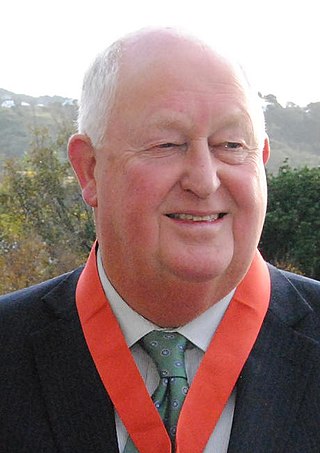
Sir Julian Stanley Smith is a New Zealand businessman and one-time publisher of the Otago Daily Times (ODT) and director of Allied Press. Smith is the fifth generation of his family to run the paper.
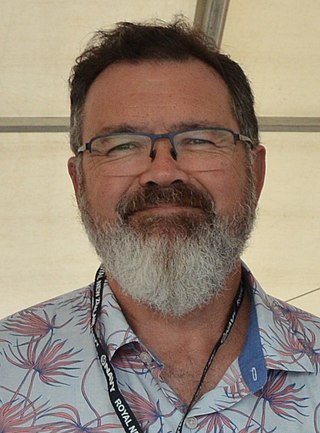
Sir Joseph Victor Williams is a New Zealand lawyer and judge. He has been a justice of the Supreme Court of New Zealand since 2019, and is the first Māori person appointed to the role.

Sir Peter John Trapski is a New Zealand jurist. He served as chief District Court judge between 1985 and 1989, and was a member of the Waitangi Tribunal from 1989 until 1993.
















